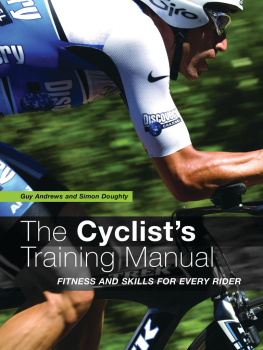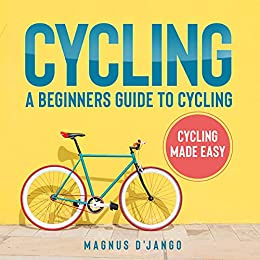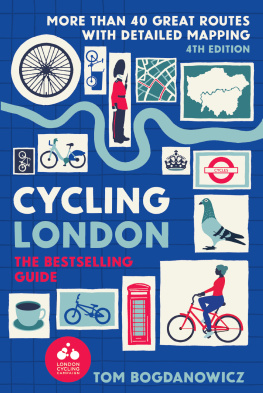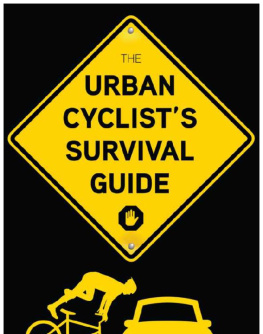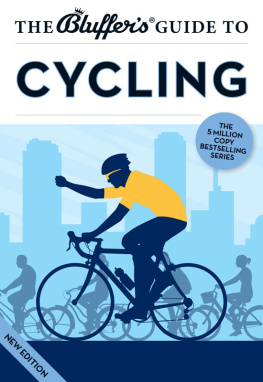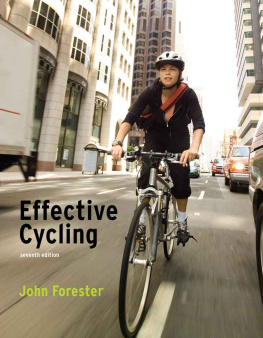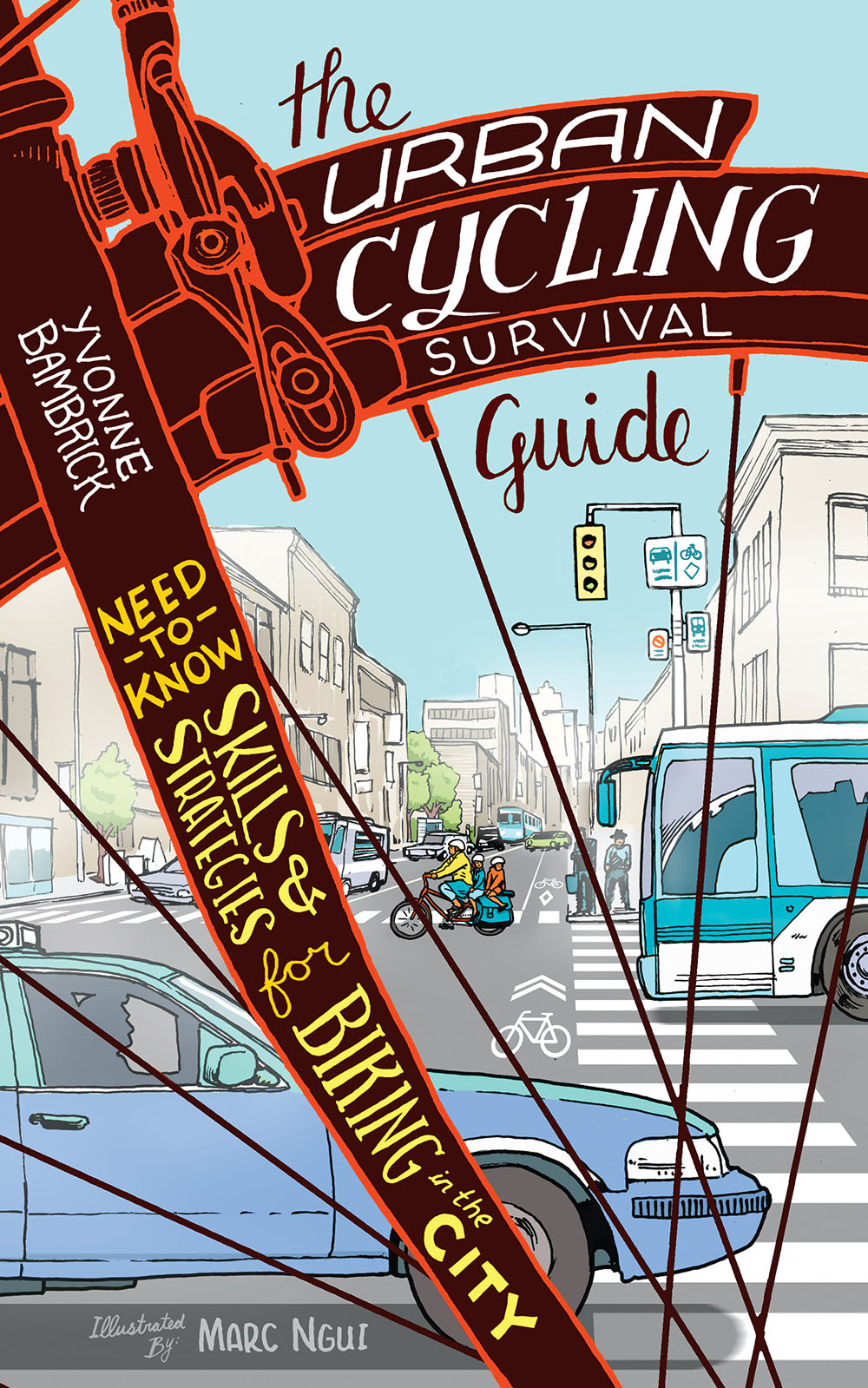Praise for
The Urban Cycling Survival Guide
With commuting costs climbing and environmental damage from car emissions increasing, cycling is becoming a more attractive form of urban transportation every day. In her charming book, renowned cycling advocate Yvonne Bambrick provides accessible and inspiring information on how we can get out of our cars and onto our bikes safely, thereby improving not only our communities but our own lives too.
Dr. Faisal Moola, Ph.D., David Suzuki Foundation
Yvonne Bambricks highly readable, informative, and compact survival guide speaks effectively to the challenges for cyclists (and drivers and pedestrians) as we get used to sharing the right-of-way.
Ken Greenberg, urban designer and author of Walking Home
Yvonne Bambrick has written a book that will be loved and well used by cyclists of all ages. Her perspective gained as a result of her years as a cycling advocate offers rich context for this terrific book. The Urban Cycling Survival Guide will help cyclists not just survive, but thrive!
Eleanor McMahon, member of provincial parliament (Burlington), former CEO and founder of Share the Road Cycling Coalition
This book is like the act of riding a bike itself: easy, efficient, and fun. Essential reading for anyone contemplating cycling in a city and for anyone already doing it.
David Miller, Toronto mayor 20032010 and avid environmentalist
The Urban Cycling Survival Guide is a comprehensive yet easy-to-read book that will enlighten you about all things urban cycling. Yvonne Bambrick is the perfect guide for any beginner cyclist.
Mia Kohout, CEO and editor-in-chief of Momentum Mag
Packed with useful tips and tricks, particularly for those new to urban cycling.
Mia Birk, author of Joyride: Pedaling Toward a Healthier Planet
From wearing a skirt or dress shoes to picking a bike to riding safely in traffic, The Urban Cycling Survival Guide breaks the basics of cycling down into manageable and understandable chunks helpful to novices and experienced cyclists. This is cycling for the every-person.
Gabe Klein, former commissioner of Chicago and Washington, D.C., Department of Transportation and member of the NACTO Strategic Advisory Board
To my father, Timothy,
for taking me along on the ride,
and my mother, Barbara,
for nurturing my independent spirit.

Bikes. Are. Everywhere. It doesnt take a study or statistic to prove that bicycle ridership is way up across North America the sheer number of bicycles on the streets of your city, and even in upscale clothing store windows, is proof enough that the bike boom is upon us. Not since the 1890s have bikes been this cool. The timeless bicycle, once known as the mechanical or iron horse, is one of humanitys oldest manufactured self-propelled personal transportation vehicles, and one thats had a profound impact on our history. From its vital role in the emancipation of women and dramatic changes to their acceptable everyday clothing (hello, bloomers!) to the paving of our city streets, the first flight, and the widely accessible transportation of people and goods over ever-greater distances, the bicycle is nothing short of a two-wheeled wonder. Its classic design hasnt even changed much since 1885, when the safety bicycle, with two same-sized wheels, a drive chain, and inflated tires, was invented.
While most of our North American cities are in varying stages of adaptation to the bicycle (and yes, were far from the bicycle nirvana of many European cities), millions of North Americans are choosing a bicycle for daily transportation. Gone are the days when bikes were seen as the last-resort transport of the poor or the domain of men in tight shorts and brightly coloured jerseys, a.k.a. MAMILs (middle-aged men in Lycra). Far more women and men of all ages, backgrounds, and occupations are now riding and theyre wearing whatever they like to do so. Bicycles are increasingly being seen, understood, and praised as the gloriously efficient, fun, fast, elegant, and accessible vehicles that they are a classic solution to so many of the issues that seem to plague our cities. When you ride your bike, it isnt just transportation, it is the key to designing the sustainable cities of the future, says Lloyd Alter, managing editor of TreeHugger.com.
With this growth in ridership, city governments across North America are also increasingly investing in expanded and updated bike infrastructure and programs, and they are recognizing bicycles as an important form of sustainable urban transportation that can help ease the burden of traffic congestion. While we might be on our way, were not there yet: Interestingly, the most bike-friendly large city in North America, Portland, has the same bicycle ridership (6 per cent), as the least bike-friendly city in Germany, Stuttgart.
But as John Pucher and Ralph Buehler point out in their book City Cycling , with the right policies in place, levels of cycling can be dramatically increased: Cities of all sizes with very different land use patterns, histories, and cultures have succeeded in increasing cycling and making it safer.
Unlike that found in the more-established cycling cities, North American transportation cycling culture is still growing and maturing; every year we have more riders with varying levels of skill. With a relatively young bike culture, limited bike-specific infrastructure (bike lanes, etc.), a gap in bike education, and a wider variety of riding conditions to adapt to, some cycling norms are still in development. New riders pick up cycling habits from watching others and through their own experiences. Although honing skills through observation and experience is important, its crucial to start from a solid foundation of knowledge.
And thats where this book comes in. As a full-time cycling advocate, I noticed adults getting back on their bikes with only a partial understanding of how to be part of traffic on two wheels instead of four, or no understanding at all if theyd never gotten a drivers licence. The physical act of riding a bicycle the balance and muscle movements needed to propel the vehicle forward does come back quite easily. The part where you ride that bike out into the often fast-paced and shared vehicular roadways of your city is not quite so simple.
Although my first taste of independence was on my bicycle, like many, I felt the next level of freedom behind the wheel of the family car. Ive been a licenced driver for over 20 years, and I actually quite like driving and can appreciate motor vehicles as the tools they are. Im certain that being a cyclist first made me a better driver, and that being an occasional driver makes me a better cyclist, because it allows me to understand the roadway from both perspectives. I sold my car in 2000 and used the money to pay for part of my post-graduate studies. Though I hadnt ridden much since my commute to and from high school, it didnt take me long to get back into the rhythm of the ride and realize what Id been missing. The idea of buying a car hasnt crossed my mind since, and Ive built my life in such a way that it shouldnt ever have to.
Getting back in the saddle allowed me to step back and see driving and car ownership from a whole new perspective. I realized that owning and habitually overusing a car for short trips actually made me and billions of others far more dependent on all the systems required to make, buy, park, insure, repair, and fuel a car, rather than providing the independence Id originally connected to car ownership. Cars, while useful and essential to some, are also a factor in so many of our societal ills obesity, stress, diseases related to a sedentary lifestyle, worsening air quality, urban sprawl, and divided communities to name but a few. Cars might be symbols of independence and freedom in advertising and rock anthems, but Ive come to fully appreciate that bicycles actually provide it, and so much more.


